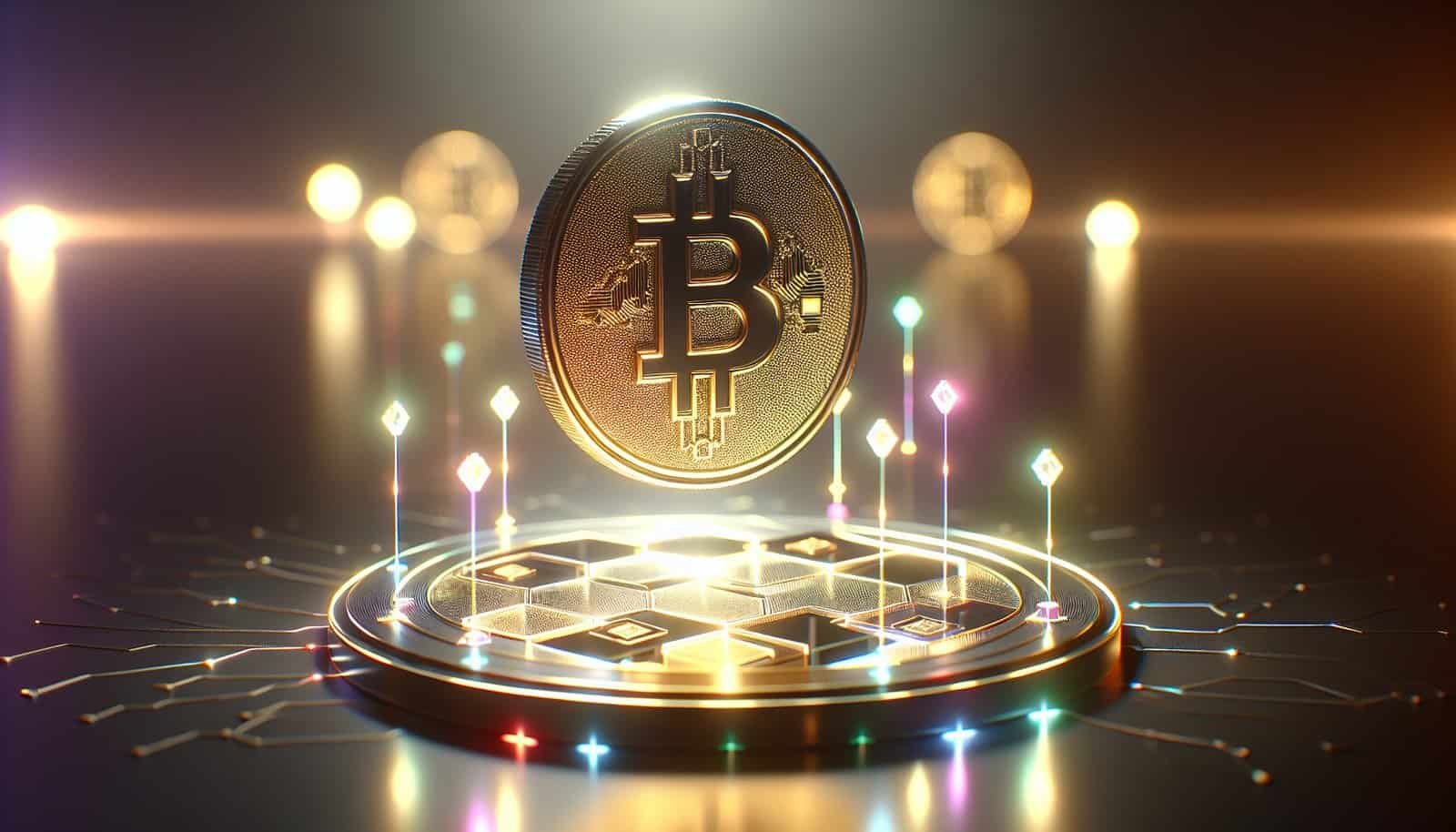? Are you curious how Binance NFT fits into the wider NFT ecosystem and what it offers if you want to mint, buy, or sell NFTs across multiple blockchains?
Binance NFT – The Marketplace Integrated Into Binance, Supporting NFTs Across Multiple Blockchains.
You’ll find Binance NFT is a marketplace built into the broader Binance ecosystem that aims to make NFT activity more accessible by linking trading, custody, fiat on-ramps, and multi-chain support under one roof. This article explains how it works, which blockchains and standards it supports, how to use it, its fees and mechanics, pros and cons, and practical tips to help you get started or manage your existing NFT activities.
What Binance NFT Is and Why It Matters
You can think of Binance NFT as the NFT storefront and services suite operated by Binance, the centralized exchange (CEX) that also runs a crypto exchange and custody services. Because it integrates with Binance accounts and wallets, it reduces friction for people who already use Binance for trading or custody, while also supporting external wallets for self-custody users.
This integration matters because it lowers barriers to entry — for fiat purchases, wallet funding, and discoverability — while offering access to NFT drops and partnerships that leverage Binance’s user base and promotional reach.
Core Features at a Glance
You’ll want to know the primary features that distinguish Binance NFT from other marketplaces. These cover account integration, supported standards, listing types, and special drops.
- Integration with Binance accounts and wallets for simple fiat-to-NFT flows.
- Support for multiple blockchains and NFT token standards.
- Two main marketplace channels (primary drops and secondary market).
- Support for auctions and fixed-price listings.
- Wallet compatibility with MetaMask, Trust Wallet, and Binance’s custodial wallet.
Each feature influences how you mint, purchase, or transfer NFTs and whether you keep private keys yourself or rely on Binance’s custody.

Which Blockchains and Standards Are Supported
You’ll encounter several token standards and blockchains in the Binance NFT environment. Binance built support for common NFT token standards across multiple chains to broaden interoperability.
Note: supported chains and exact availability of listing on a specific chain can change. Always check Binance’s official documentation or the listing flow when you mint or transfer.
Commonly supported token standards
You will see these token standards on the platform:
- ERC-721 (Ethereum standard for unique NFTs)
- ERC-1155 (Ethereum standard allowing semi-fungible tokens and batches)
- BEP-721 (BNB Chain equivalent of ERC-721)
- BEP-1155 (BNB Chain equivalent of ERC-1155)
These standards determine how metadata, ownership, and transfers behave across supported chains.
Typical blockchain support (illustrative)
This table summarizes typical chain support you might encounter. Availability can change based on Binance policy and technical integrations.
| Blockchain / Network | Token Standards | Typical Uses |
|---|---|---|
| Ethereum | ERC-721, ERC-1155 | Large NFT collections, high liquidity, broad ecosystem support |
| BNB Chain (BNB Smart Chain) | BEP-721, BEP-1155 | Lower gas fees, integrated with Binance ecosystem, growing projects |
| Other chains (varies) | Compatible standards where supported | Occasional cross-chain collaborations or third-party integrations |
If you need absolute certainty on chain availability for minting or a specific collection, check the mint/listing page or the collection’s details before proceeding.
How Binance NFT Works — An Overview
You’ll find the process broken down into a few clear stages: account and wallet setup, funding, selecting or minting NFTs, listing and selling, and withdrawals or transfers. The marketplace merges centralized account conveniences with blockchain-native ownership (if you use external wallets).
- If you use a Binance account and custodial wallet, Binance holds custody of your tokens on your behalf until you withdraw them to an external wallet.
- If you connect a self-custody wallet like MetaMask or Trust Wallet, you keep private keys and sign on-chain transactions yourself.
Understanding custody is critical since it affects control, fees, and security responsibilities.
Account and Wallet Options
You’ll need to decide whether to use a custodial Binance wallet or an external wallet. Each option has trade-offs.
Custodial Wallet (Binance account)
You can use your Binance account wallet to buy NFTs using fiat or crypto with fewer friction points. Binance manages keys and on-chain interactions for you in many cases.
- Pros: Simpler fiat-to-NFT path, centralized support, easier for newcomers.
- Cons: You don’t hold private keys; withdrawal is needed to achieve on-chain self-custody.
Self-custody Wallets (e.g., MetaMask, Trust Wallet)
If you connect MetaMask or Trust Wallet, you retain private keys and sign transactions directly. This is the blockchain-native approach.
- Pros: Full ownership and control; more flexible for transfers and cross-platform use.
- Cons: You’re responsible for keys and gas payments.

How to Connect a Wallet (High-Level)
You’ll typically see the following options on the Binance NFT interface. The exact flow may vary slightly, but you’ll perform these general steps:
- Sign in to your Binance account or create one.
- Open Binance NFT marketplace and choose “Connect Wallet.”
- Select a compatible wallet (Binance custodial, MetaMask, Trust Wallet).
- Authorize the connection and, for external wallets, sign the signature request in your wallet app.
Always confirm the domain and requests to avoid phishing.
Buying NFTs: Fixed-Price Purchases and Auctions
You’ll encounter at least two common purchase flows on Binance NFT.
Fixed-price purchases
These let you buy an NFT instantly at the price listed. You can often use supported cryptocurrencies or fiat (depending on the collection and your account).
- Immediate transfer occurs after payment and any applicable fees.
- If you use a custodial wallet, the NFT may appear under your Binance NFT account and you can withdraw it later.
Auctions
Auctions let you place bids. If you win, you execute the purchase at the final winning price.
- Bid mechanics often require an earnest deposit or approval depending on the token standard and marketplace configuration.
- Pay attention to auction end times, bid increments, and whether the auction uses native chain bidding or Binance-managed escrow.
Minting NFTs on Binance NFT
You’ll want to know if and how you can mint NFTs on Binance NFT. Binance offers opportunities to mint directly on the platform via managed drops or via partner integrations. The minting pathway differs between primary/promotional drops and general minting initiatives.
- For curated drops, Binance often works with creators for launch events; terms, royalties, and fees are governed by the drop’s terms.
- For self-service minting (if available), you will need to upload artwork, provide metadata (title, description, properties), set token standards (if selectable), and choose royalty settings within allowed ranges.
Minting may require transaction fees (gas) if you mint on-chain or platform fees if performed via a managed service.

Listing NFTs for Sale
You’ll use the NFT’s interface to list. The main choices are:
- Fixed-price listing: set a price and list immediately.
- Auction listing: set a starting price and duration for bidding.
When you list, you choose supported payment tokens (examples: BNB, ETH, or platform-specific tokens) and set royalty percentages where allowed. You’ll also see whether the listing is on a specific chain or within Binance’s custodial environment.
Fees, Royalties, and Payments
Understanding fees and royalties is crucial because they determine your net proceeds and the buyer’s total cost.
Typical fee types
You’ll encounter several fee categories:
- Marketplace service fee: charged by Binance for facilitating the sale.
- Creator royalties: paid to the original creator if royalties are enforced by the smart contract or platform policy.
- Network (gas) fees: charged by the blockchain for minting, transferring, or claiming NFTs (applies to self-custody wallets and on-chain transactions).
- Withdrawal/bridge fees: when moving NFTs between chains or off Binance.
Because fee structures can change, the table below provides an illustrative summary with a clear caveat to verify current fees on Binance.
| Fee Type | Typical Range / Notes |
|---|---|
| Marketplace service fee | Often a small percentage (e.g., 1%–2%) — verify current Binance policy |
| Creator royalty | Configurable by creator; common ranges 2.5%–10% depending on collection |
| Network (gas) fee | Varies widely by chain and congestion (Ethereum gas can be high; BNB Chain generally lower) |
| Withdrawal / bridge fees | Depends on chain and bridging mechanism; may include multiple on-chain fees |
Always check the checkout or listing screen for exact fee calculations before confirming a transaction.
File Types, Metadata, and Standards
You’ll need to know what file types and metadata are supported so your NFT displays and functions correctly.
Common accepted file formats
Most marketplaces accept images, animated GIFs, audio, and video within supported size limits. Typical formats:
- Images: PNG, JPG/JPEG, GIF
- Video: MP4, WebM (often with size restrictions)
- Audio: MP3, WAV (for audio NFTs)
- Metadata: JSON files following the chosen token standard
Metadata importance
Metadata defines the NFT’s title, description, attributes (traits), and external links. Standard metadata schemas (e.g., ERC-721/1155 metadata JSON) ensure interoperability and accurate rendering across wallets and platforms.

Security Considerations and Best Practices
You’ll want to protect yourself while using Binance NFT. Security practices vary depending on whether you use custodial or self-custody wallets.
- Use two-factor authentication (2FA) on your Binance account.
- Confirm you’re on the official Binance domain and not a phishing site.
- If you use MetaMask or another self-custody wallet, protect your seed phrase in secure offline storage.
- Review smart contract addresses before approving transactions.
- Be cautious about signing arbitrary contract interactions or permits.
Loss of a seed phrase or approval of a malicious contract can lead to permanent asset loss.
Cross-Chain and Bridging Considerations
You’ll sometimes want to move NFTs between chains. Cross-chain support may be possible through bridges or via Binance’s internal systems, but complexity and fees increase.
- Some NFTs are minted on a chain-specific standard and can’t be directly ported without wrappers or bridging.
- Wrapped NFTs or representations can be created to move value between chains, but this adds trust/technical risk.
- Always verify the destination chain and compatibility before initiating a transfer or bridge.
Comparing Binance NFT to Other Marketplaces
If you’re choosing a marketplace, you’ll compare factors like liquidity, fees, discovery, and user experience. Binance NFT’s strengths and trade-offs include:
- Strengths: Integrated fiat on-ramps, existing user base, promotional drops, and lower friction for Binance users.
- Trade-offs: Custodial options add centralized custody risk; some niche or experimental projects may prefer fully decentralized marketplaces.
Here’s an abbreviated comparison table to help you weigh options:
| Factor | Binance NFT | Decentralized Marketplaces (e.g., OpenSea) |
|---|---|---|
| On-ramp & fiat support | Strong (integrated) | Limited (third-party services) |
| Custody options | Custodial + external wallets | Primarily self-custody |
| Promotional drops | Large-scale opportunities via Binance network | Community-driven drops common |
| Fees & royalties | Varies; platform-managed | Varies by marketplace; some enforce royalties via smart contracts |
| Chain support | Multi-chain via Binance integrations | Multi-chain but depends on platform integrations |
Your choice may depend on whether you prioritize ease of use, control, or decentralization.

Practical Step-by-Step: How to Buy an NFT on Binance NFT
You’ll follow these general steps. Exact UI labels may differ slightly.
- Sign in to your Binance account. If you don’t have one, create and verify it.
- Fund your account with supported crypto or use fiat channels if available for the listing.
- Visit Binance NFT marketplace and browse or search for the collection.
- If you find a fixed-price item, click “Buy Now” and confirm the purchase details and fees.
- If you’re bidding in an auction, place a bid, monitor the auction, and confirm the transaction if you win.
- Check your Binance NFT wallet or connected external wallet for receipt of the NFT.
- Withdraw to a self-custody wallet if you prefer to hold off-exchange.
Follow each on-screen confirmation carefully and confirm fees before finalizing.
Practical Step-by-Step: How to List an NFT for Sale
If you already own an NFT (in your Binance account or external wallet), you’ll list it like this:
- Navigate to “My NFT” or the collection and select the NFT you want to sell.
- Choose listing type: fixed price or auction.
- Set price, currency, and listing duration or auction specifics.
- Confirm royalties and platform fee estimates as displayed by Binance.
- Sign the sale transaction with your connected wallet (if required) or complete Binance’s listing flow for custodial items.
- Monitor offers and complete the sale when matched.
Make sure you understand withdrawal timelines and any cooldowns before setting a sale price.
Royalties and Creator Rights
You’ll want to check how royalties are enforced. Royalties are typically encoded in the contract or managed at the marketplace level. On Binance NFT:
- Some collections enforce on-chain royalties via smart contracts.
- Others use marketplace-level enforcement where the platform automatically routes royalties to creators on secondary sales.
- The percentage and enforcement approach vary collection-by-collection.
If you’re a creator, set royalty rates consistent with your community expectations and marketplace policies. If you’re a buyer or reseller, verify whether royalties will be deducted from proceeds on secondary sales.
Tax, Legal, and Compliance Considerations
You’ll need to be mindful of tax and legal implications when trading NFTs. Binance operates under regulatory regimes that may require KYC, reporting, or restrictions in certain jurisdictions.
- Profits from NFT sales may be taxable as capital gains or income depending on your jurisdiction.
- Fees, royalties, and gas costs affect your tax basis and need to be tracked.
- Some NFT activities (drops, tokenized assets) may implicate securities or commodities laws depending on structure and local rules.
It’s wise to consult a tax advisor or legal professional familiar with crypto and NFTs in your country before engaging in high-volume trading or launching a large-scale collection.
Troubleshooting Common Issues
You’ll occasionally face issues. Here are common problems and how to approach them:
- Missing NFT after purchase: Check your Binance NFT wallet and transaction history. If using an external wallet, check the blockchain explorer for token transfers.
- Unsuccessful mint due to gas: Retry when the network is less congested or choose a lower-gas chain when supported.
- Problem connecting wallet: Ensure you’re on the correct domain, clear the browser cache, and reauthorize the connection.
- Disputed sales: Contact Binance support and provide transaction IDs, screenshots, and order details.
Document transaction hashes and screenshots for faster resolution with support teams.
Tips to Get Better Results on Binance NFT
You’ll benefit from strategies that improve discoverability and buying experience:
- Use accurate, descriptive metadata, and add clear trait attributes to increase collector interest.
- Promote drops via social channels and use verified collection badges when possible.
- Time minting and gas-heavy operations for off-peak hours if gas fees matter.
- Keep your wallet secure and maintain a separate address for high-value activity.
Gamify your drops carefully: scarcity, utility, and community are frequent success factors for NFT projects.
Use Cases and Real-World Examples
You’ll find several popular use cases for NFTs on Binance NFT:
- Art drops and curated collections with limited supply.
- Sports and entertainment collectibles issued via official partnerships.
- Music and multimedia NFTs offering royalties or exclusive rights.
- Game assets minted on chain and used across compatible gaming ecosystems.
Binance’s partnerships often bring high-profile IP and creators to the platform, increasing visibility and trading volume for participating collections.
Pros and Cons — Quick Summary
You’ll want a concise look at strengths and trade-offs:
Pros:
- Seamless fiat-to-NFT experience for Binance users.
- Access to high-profile drops and large user base.
- Multi-chain compatibility and wallet options.
Cons:
- Custodial options can reduce direct ownership control.
- Fee and policy changes may occur under centralized platform governance.
- Some collectors prefer fully decentralized marketplaces for certain projects.
Consider these when deciding where to mint or list.
How to Verify Authenticity and Collection Provenance
You’ll need to check provenance to avoid fake or token-swap scams:
- Look for verified collection badges or official links from creator channels.
- Check token contract addresses against official project pages.
- Use blockchain explorers to inspect minting and transfer history.
- Be skeptical of listings that claim to represent famous brands without official links.
A careful provenance check significantly reduces the risk of purchasing counterfeit NFTs.
Frequently Asked Questions (FAQ)
You’ll often ask these questions. Here are succinct answers.
Q: Can I withdraw my NFT from Binance to an external wallet? A: Yes. Withdrawals typically require you to pay network fees and confirm the destination address. Ensure the destination wallet supports the token standard.
Q: Are royalties enforced on Binance NFT? A: Royalties can be enforced either on-chain or at the marketplace level depending on collection settings. Check the collection page for details.
Q: What payment methods are accepted? A: Binance typically supports crypto payments and, for some drops, fiat payments via integrated channels. Accepted currencies depend on the listing.
Q: Is Binance NFT custodial or non-custodial? A: Both options are available. You can use Binance custodial wallet services or connect an external self-custody wallet like MetaMask.
Q: How do I report fraud or a stolen NFT? A: Gather transaction hashes and screenshots, then contact Binance support. If it’s an on-chain theft, file a report with relevant authorities and consider publicizing the token ID to warn others.
Future Developments to Watch
You’ll want to keep an eye on developments that could affect Binance NFT use:
- Expanded chain support and improved bridging solutions for true cross-chain NFTs.
- Evolving royalty standards and on-chain enforcement mechanisms.
- Enhanced tools for creators (collections management, analytics, minting GUIs).
- Regulatory shifts that could change listing, KYC, and fiat flows.
Staying informed helps you adapt to changes and take advantage of new opportunities.
Final Recommendations
You’ll get the most from Binance NFT by aligning your goals with the platform’s strengths:
- If you value ease of use, fiat on-ramps, and promotional reach, Binance NFT is compelling.
- If you require complete self-custody, use an external wallet and be prepared for more manual on-chain interactions.
- Always verify fees, token contract addresses, and provenance before buying or selling.
- Keep secure backups of any private keys or seed phrases and use 2FA on exchange accounts.
If you follow these practices, you’ll enjoy a smoother, safer experience while participating in Binance’s integrated NFT marketplace.
Additional Resources and Where to Check for the Latest Info
You’ll want to consult official sources for the freshest, most accurate information:
- Binance’s official help center and NFT marketplace pages.
- Collection-specific announcements from creators and official social channels.
- Blockchain explorers (Etherscan, BscScan, etc.) for transaction verification.
- Legal and tax advisors for jurisdiction-specific guidance.
Rely on primary sources and on-chain data for confirmation whenever possible.
If you’d like, I can provide a condensed checklist for your next mint, sale, or purchase on Binance NFT, or walk you through a simulated step-by-step transaction tailored to whether you use a custodial or self-custody wallet.
